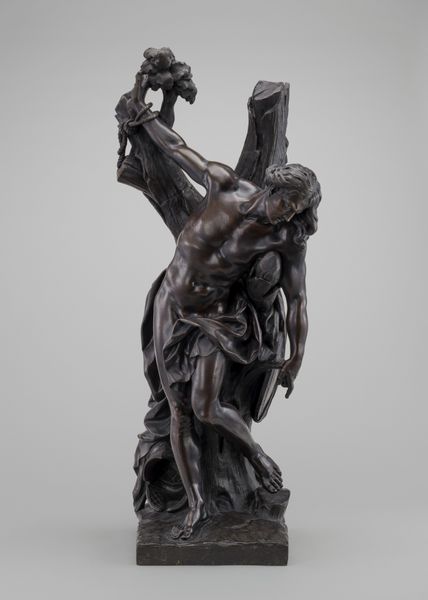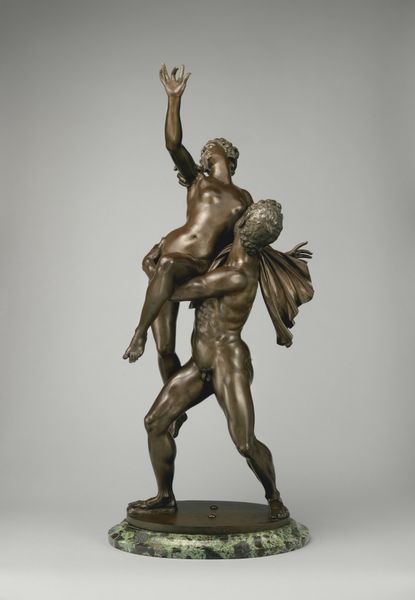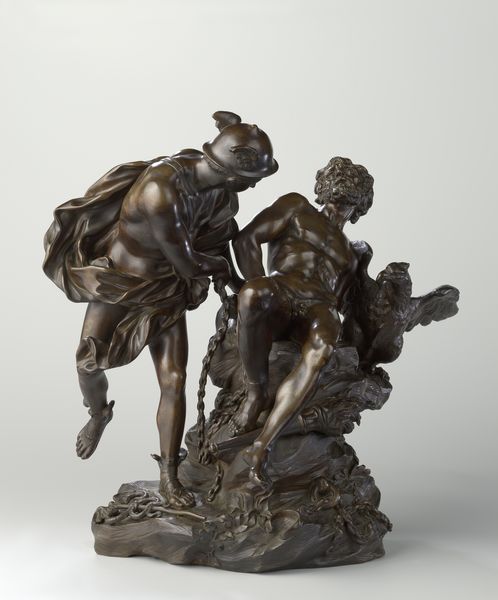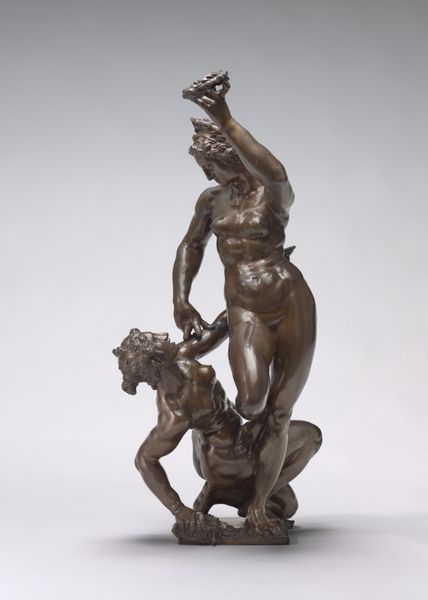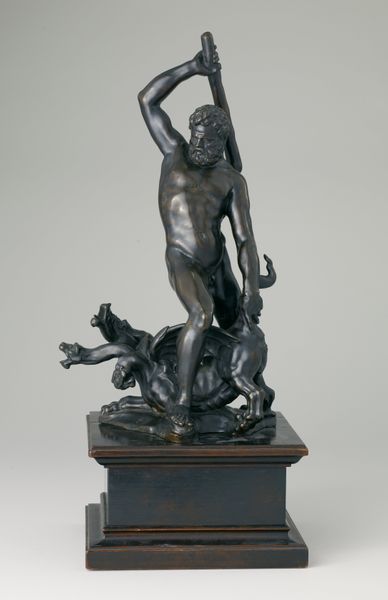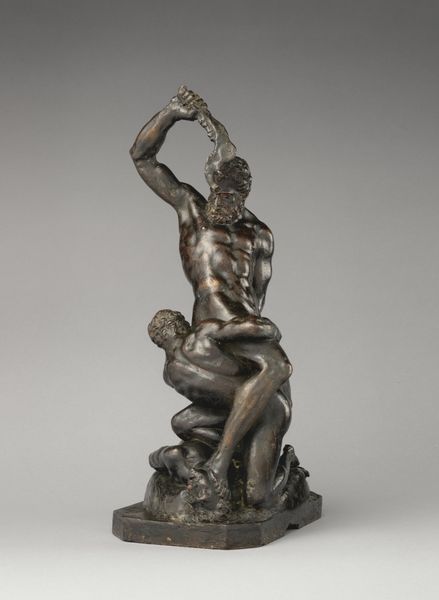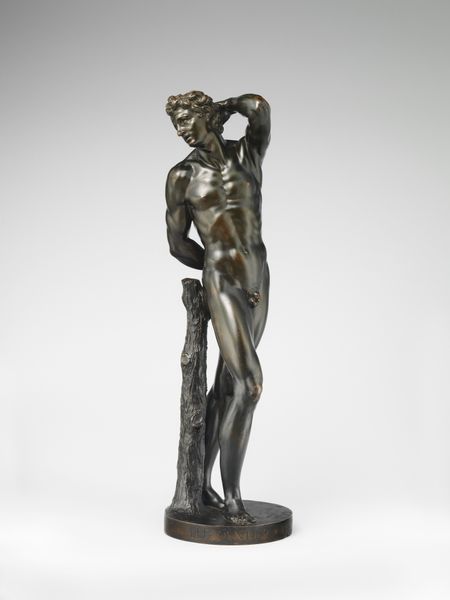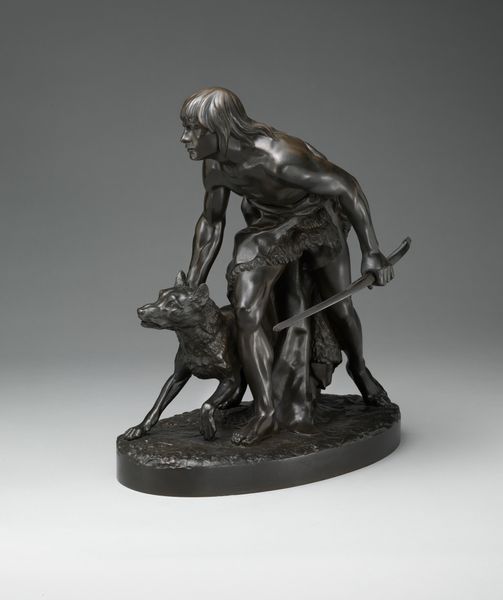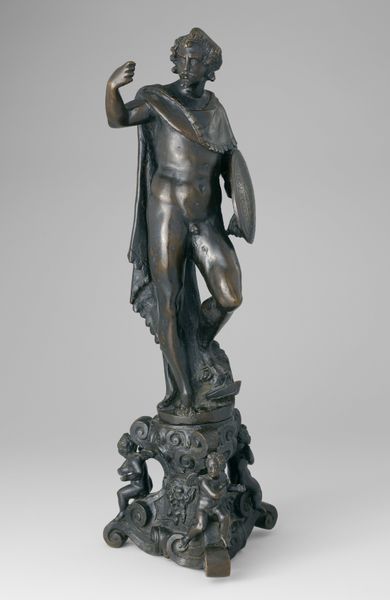
Daedalus Attaching the Wings to his Son c. early 18th century
0:00
0:00
bronze, sculpture
#
baroque
#
sculpture
#
bronze
#
figuration
#
sculpture
#
history-painting
Copyright: Public Domain
This bronze sculpture captures Daedalus attaching wings to his son, Icarus. The lost-wax casting process, by which it was likely made, involves creating a wax model, encasing it in clay, melting out the wax, and then pouring molten bronze into the resulting mold. The material is critical to the work's impact. Bronze, with its strength and capacity for fine detail, allowed the artist to create a lasting and intricate representation of the mythological scene. The dark patina gives the surface a depth that accentuates the musculature of the figures and the texture of the wings. The laborious process of bronze casting, requiring skilled artisans and careful attention to detail, elevates the sculpture beyond mere representation. It speaks to the time-honored traditions of craftsmanship, connecting the artwork to a rich history of creative practice. By attending to the material and the making, we can appreciate not only the aesthetic qualities of the sculpture but also the social and cultural significance embedded within it.
Comments
minneapolisinstituteofart almost 2 years ago
⋮
Daedalus, the architect, inventor, and craftsman of Greek legend, is shown attaching wings to the back of his son, Icarus, and pointing upward and away. According to the most influential version of the ancient myth as it is recounted by Ovid, Daedalus fabricated wings of feathers and wax in order to escape by air from the island of Crete, where he and his son were held captive by King Minos. Disregarding his father’s advice, Icarus flew too close to the sun. The wax melted and he fell into the sea and drowned. The myth of Daedalus and Icarus has remained a popular parable about heeding one’s elders, the dangers of excessive ambition and pride, and the benefits and risks of technological progress.
Join the conversation
Join millions of artists and users on Artera today and experience the ultimate creative platform.

